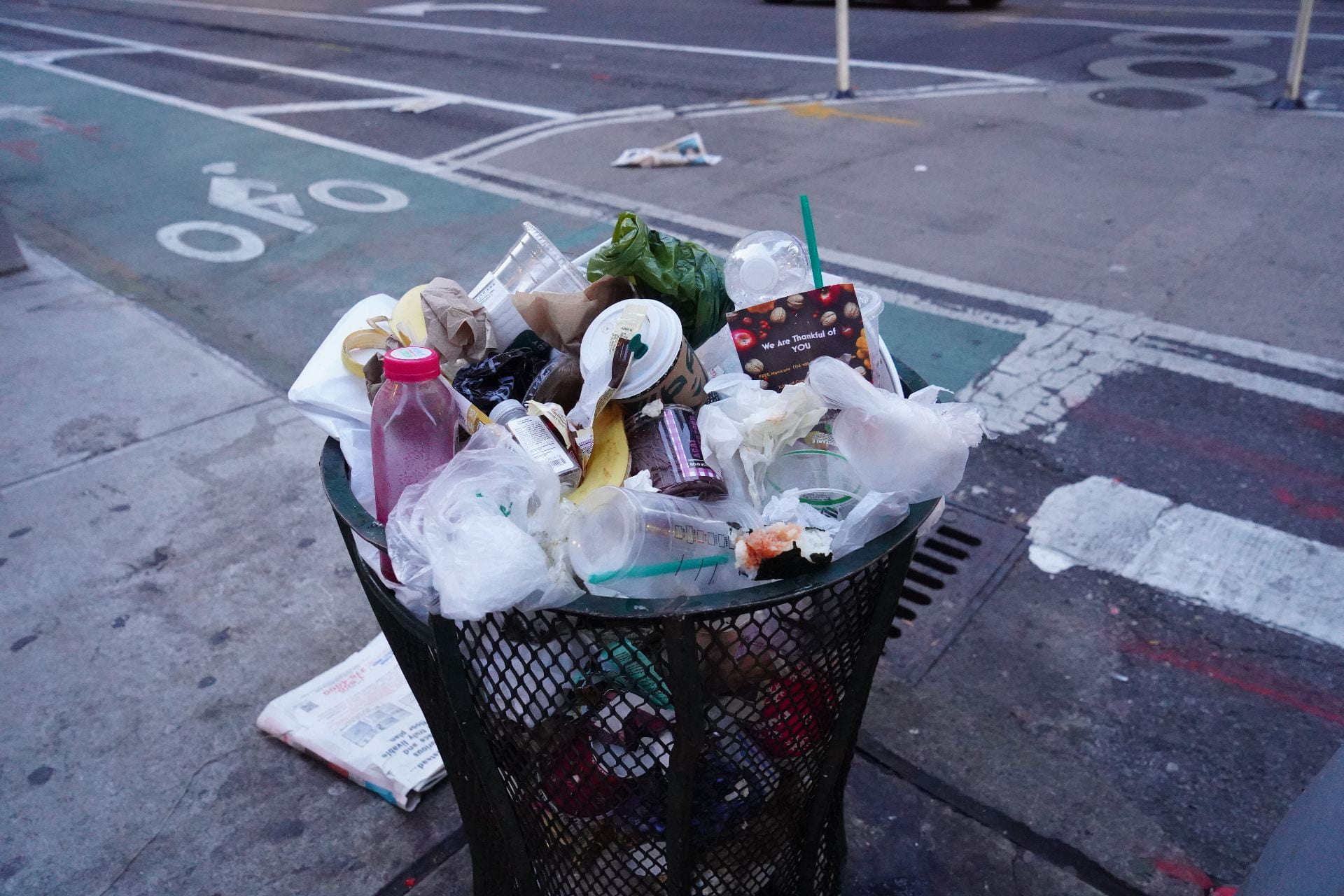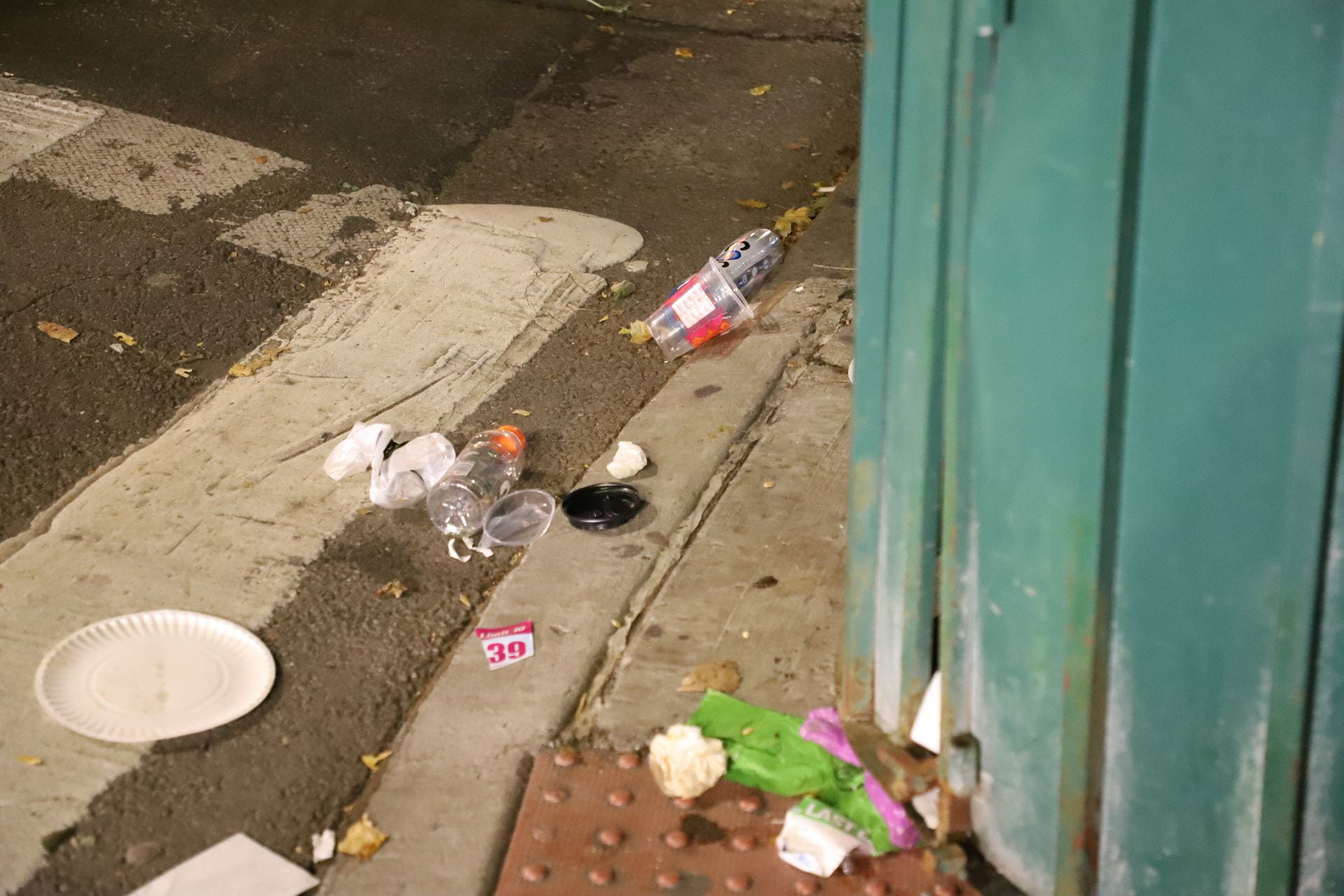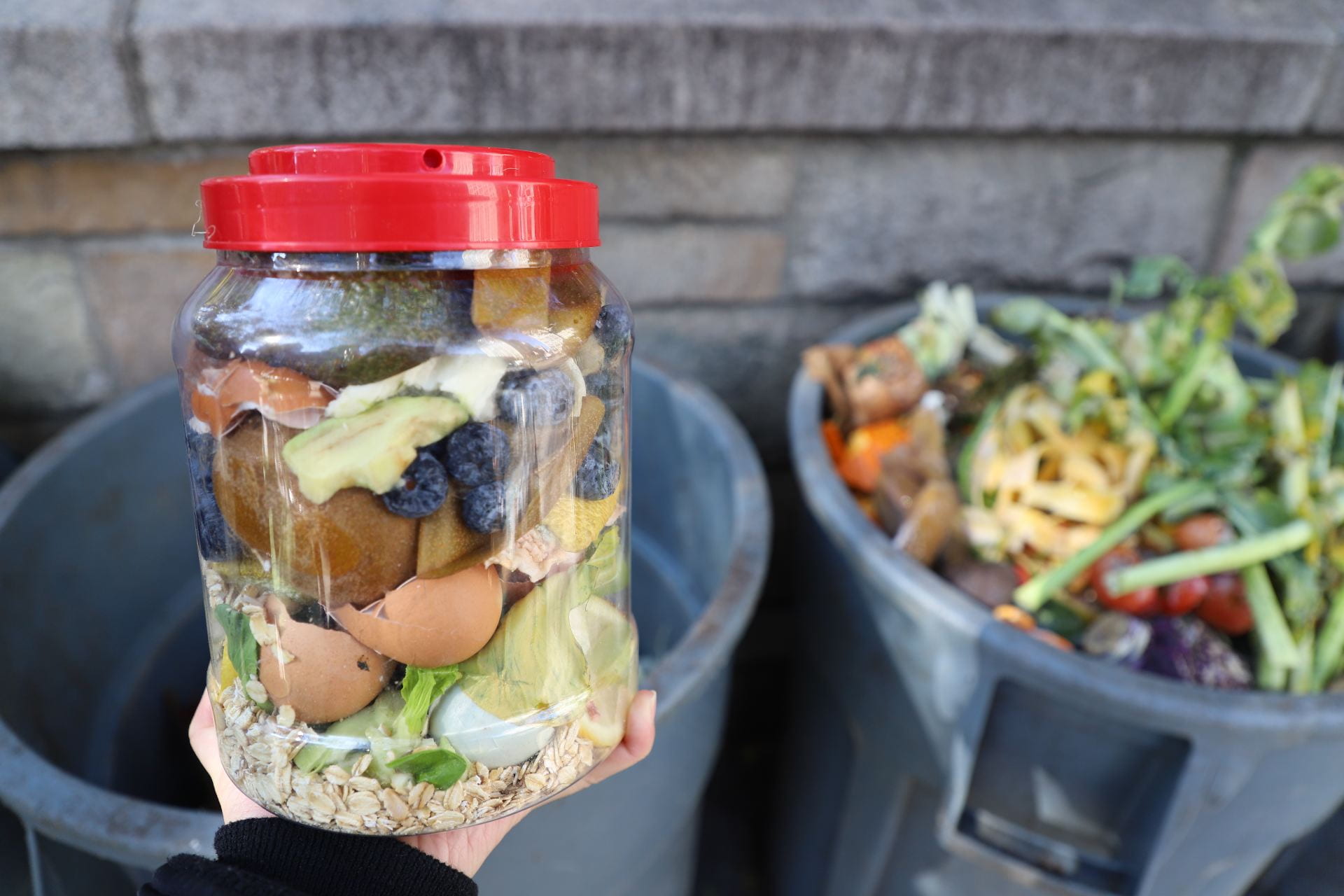As I read the NYC’s plan on zero waste by 2030, I think it is a brief but comprehensive plan. It does not say something specific but it does reveals the problems the city is facing right now. It’s also good to know that the city is working on it and the goal is more ambitious than I thought. But it remains questionable how it’s going. Single stream recycling is a more efficient way and how recyclables are sorted at recycling facilities in NYC like SIMS is single stream recycling, but from what I am experiencing in the city, trash bins on the street or in the parks are either all landfill bins or landfill bins and traditional green and blue recycling bins. There are all landfill bins on street corners around our school area and often times they are filled up quickly (Fig. 1). As we can tell, there are many recyclables like plastic bottles and cans. There are also many plastic bag. When people keep throwing, the trash will be blew onto the street, which creates the opportunity for trash on the street to go to the ocean through Combined Sewer Overflow (Fig. 2). I believe the city is working on it for a better recycling system and as far as I know of there was a competition for designing better garbage can for NYC. Same thing happens to expanded polyethylene and plastic bag. It’s claimed that the law that bans EPS in NYC has taken effect but they are still out there in the supermarket or food court.However, I think the city needs to push harder and have things done more efficiently. After reading the article ‘Is New York’s 2030 ‘zero waste’ goal receding from reach’, which confirms my doubt, I learned that there are many issues like lack of financial support, lack of education on public about organics collection, and lack of incentive to push harder, etc,. As we can tell, actually doing thing is harder and more complex than throwing out a perfect plan.
Fig.2
I did not know too much about how NYC deals with commercial garbage before reading the plan, but it turns out this a sector that also generate a large amount of garbage and because they are profit-driven and there is not enough incentive and awareness for them to reduce the waste and single-use plastics. According to the plan, commercial food-waste diversion program is only voluntary and the lack of food-waste processing ability is also a big issue that the city needs to solve. Even there is a law for commercial waste recycling, how well it has been regulated is in doubt. Food waste is a big sector in both residential and commercial waste and I am really glad there is a program to educate New Yorkers about how food waste can be an important resources rather than being a contributor to global warming by entering into the landfill. However, I don’t think the program is reaching a broad enough demographics at this point even it is claimed that they are working on reaching more residents to educate them to collect their food waste to compost. I came to know that GrowNYC has a compost program that collects people’s waste in different sites several days in a week. They set up compost bins at Union Square every Monday, Wednesday, Friday, and Saturday and I will collect my food waste and also my roommates’ and throw it to the compost bin once a week (Fig.3). However, I did not know this program and how food waste is creating greenhouse gases if they go to landfills until I saw a YouTuber’s video on composting. The video was recommended to me because I saw other zero waste video on YouTube, which means if someone is not interested in zero waste they are not going to be exposed to this kind of information, which is a part of the reasons why I never saw young people when I sent my food waste to the compost bin.
Fig. 3
Moreover, if there is a better alternative to styrofoam and other single-use food container, that would be compostable or eatable trays and containers despite the fact they they are not ideal for liquid and the cost are much hight than styrofoam. Meanwhile, there needs to be a better system for collecting compost to processing compost. Here at The New School, a school that claims to be really serious about sustainability, students are not educated well enough on recycling and composting. Compost bins are only seen in the dining area where people throw everything in the compost bins. People take plastic bags even they don’t really need one. Some classrooms only has landfill bins and people throw recyclables in landfill bins even recycling bins are located right outside of the classroom. Schools are generating a lot of trash and there has to be a better way to deal with it. In my opinion, education on sustainability also needs to be in the plan.
Also, there are many tough items in the waste stream that is hard to divert, and it has to with a much larger context, so NYC alone cannot solve the problem. For example, it does not make sense to me if a plastic product does not have recycling code, which I think there should be a policy to regulate product with strict life cycle assessment. I think branding is important to reach broader audiences in order to largely increase public engagement. MTA has the branding of “If you see something, say something” is all over NYC, and it’s been really successful. Even if New York City is doing better than most places in the world, but the city is dirty and the population is so dense, NYC need to be more aggressive and plays an exemplary model for the other cities.



Leave a Reply